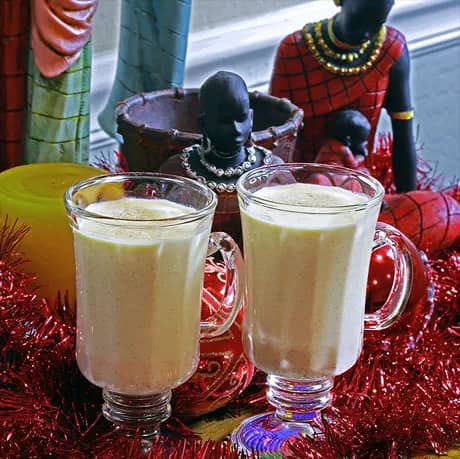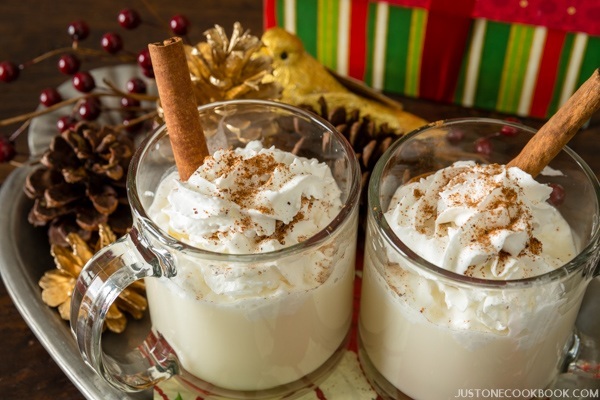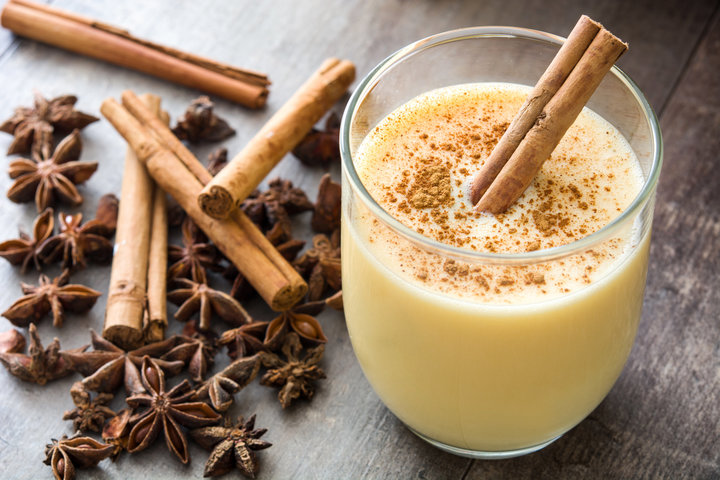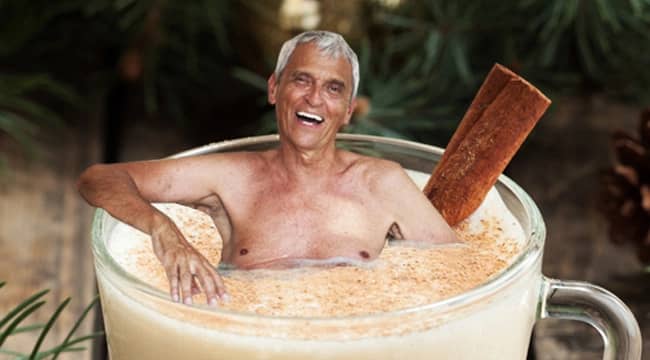Life can get messy and unpredictable sometimes, and some things are just out of our…
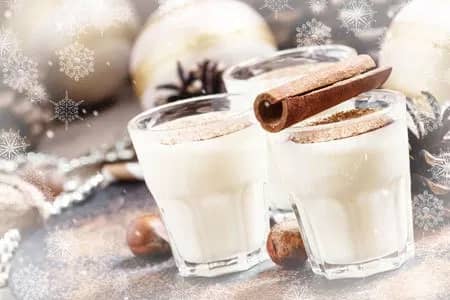
The untold truth about Egg Nog
It’s the most wonderful, or terrible, time of the year. Because everybody’s favorite (or least favorite) calorie-packed, viscous seasonal beverage has made its annual, puddy yellow return. That’s right, y’all. It’s ‘nog time.
Eggnog is a decidedly ambiguous beast – some make it with rum.
Some swear by whiskey. Others faint if you don’t use brandy. There are store-bought versions. There are homemade recipes going back centuries. There are egg-free varieties, and ones that go dairy-free with coconut milk. Yet for all the drama around this holiday drink, I’ll bet you don’t know the first thing about its origins.
1. Most historians agree that eggnog originated from “posset,” a hot, milk-based alcoholic drink consumed in medieval Britain by monks (AKA the most prolific drinkers of all time). Posset was made by mixing hot milk with ale, wine, or another liquor, then flavored with spices, and it was believed to be a remedy for colds. [PS – All you Shakespeare scholars may remember that Lady Macbeth poisoned the guards’ possets outside of Duncan’s quarters.]
2. Come the 1600s, eggnog was pretty popular amongst the wealthier British citizens. By then, its core ingredients – eggs, milk, and sherry – were quite expensive, so it became a symbol of prosperity and was primarily consumed by the rich folks.
3. Eggnog didn’t become linked with the holiday season until it made its way across the pond to America in the 1700s. Colonists had easy access to the key ingredients – chickens (eggs), cows (milk), and grains and sugar cane (whiskey, rum) – which made its consumption much more prevalent, and no longer linked only to the moneyed classes.
4. So, what’s with the name? The “egg” part is obvious, of course – but the “nog” part, not so much. Like many things in history, we don’t really know for sure. It might refer to “noggin,” an English term for glasses used to serve alcohol. It might be straight from the Norfolk slang word of “nog,” which referred to certain alcoholic beverages. Take your pick!
5. Our beloved boozehound and first President George Washington was a big fan of eggnog. He had his own recipe, which has been salvaged from Mount Vernon’s kitchen records, and includes a fairly insane quantity of rye whiskey, Jamaican rum, and sherry.
One quart cream, one quart milk, one dozen tablespoons sugar, one pint brandy, ½ pint rye whiskey, ½ pint Jamaica rum, ¼ pint sherry—mix liquor first, then separate yolks and whites of eggs, add sugar to beaten yolks, mix well. Add milk and cream, slowly beating. Beat whites of eggs until stiff and fold slowly into mixture. Let set in cool place for several days. Taste frequently.
Hell yeah, Washington. We will taste frequently.
Egg Nog : You can make it at Home!
Most of us (who admit to liking the stuff) buy it by the carton, or gallon jug if it’s been a real tough week. But making eggnog at home is an adventure, fully worth trying—though only if you’re comfortable around large quantities of liquor and raw eggs. Some recipes, like Alton Brown’s, make smaller quantities—6 to 7 cups—with a small amount of liquor — 3 ounces of bourbon (he also has a cooked option). If you wanna go hedonistic whole hog, try The Joy of Cooking recipe. There’s a dozen eggs, a pound of confectioner’s sugar, and 4 to 6 cups of rum. Oh, and lots of cream.
There is some serious FDA Egg Nog Regulation
“The name of the food is eggnog. The name of the food shall be accompanied by a declaration indicating the presence of any characterizing flavoring as specified in 101.22 of this chapter.”
Sheer poetry. Then again maybe it’s no surprise the FDA has a bit to say when America decides to drink eggs for a month. Speaking of which, “the egg yolk solids content is not less than 1 percent by weight of the finished food,” meaning there’s actually a minimum egg yolk content. But don’t worry—for anything store bought, “the food shall be pasteurized or ultra-pasteurized and may be homogenized.” Meaning you’re safe in the loving arms of the FDA and its eggnog police.
The origins of “NOG” are as confusing as they should be
It’s not entirely agreed upon where “nog” comes from, and why ruin the mystery of a good weird word? Chances are the word comes from either the term “noggin,” the name of a small cup that was used for imbibing, or “nog,” which was a slang term for a kind of ale brewed in 17th Century East Anglia—aka the Anglo-Saxon kingdom of Eastern England.
You can age it
Again, according to food science master Alton Brown, you can not only age homemade eggnog, but it may actually improve the stuff. The immediate benefit of aging eggnog is killing of any and all salmonella without a doubt. But according to Brown, you can actually age eggnog for weeks, even months, creating a more cohesive product. Basically the eggnog whole is greater than the sum of its parts.
It’s centuries old
Eggnog’s origins are a bit murky, and we like it that way—it’s the only thing that adds an air of cool or mystery to drinking what’s basically melted ice cream. To be fair, historians generally agree it probably comes from a Medieval British drink called “posset,” or hot milk curdled with ale or wine. (Yes, nog haters, there was something weirder than eggnog.)
Latin America loves its egg nog variations
Other countries like their milky alcoholic holiday beverages just as much as we do. More, even. In Mexico, El Salvador, Belize, Nicaragua, and Costa Rica, they drink Rompope, made with egg yolks, milk, vanilla, rum (or whiskey). And in Puerto Rico, they make Coquito with rum, sweetened condensed milk, egg yolks, spices, rum, and coconut milk, adding a bit of tropical creaminess to a drink that’s made it the long haul.
Just in case you are wondering why is egg the only nog?
Well, a nog was a kind of strong ale that was made in parts of England around Suffolk. But others believe that it comes from the use of a wooden cup called a noggin.

